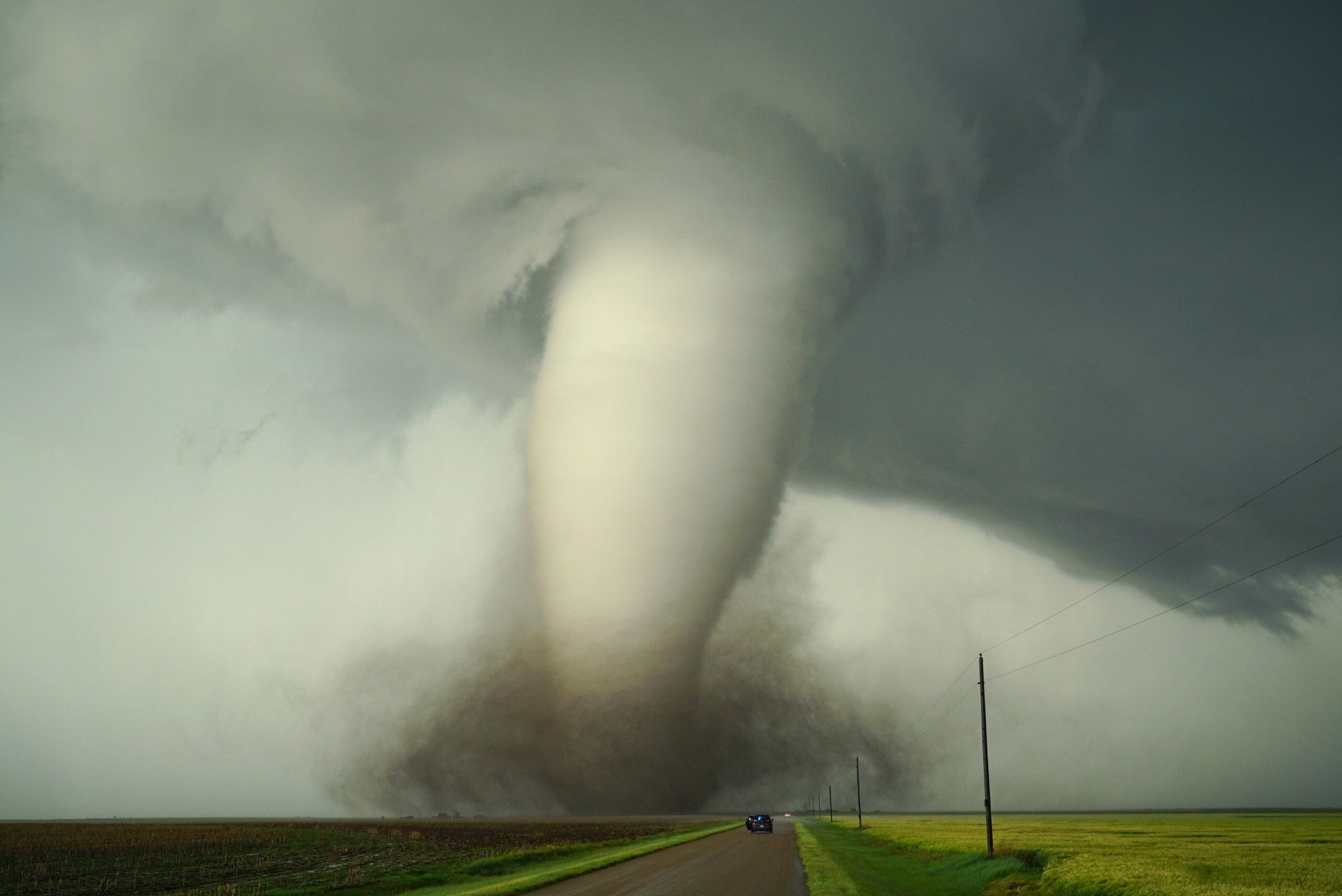
Tornadoes
Tornadoes are powerful storms that can cause considerable damage to communities. They can break branches from trees or lift houses off their foundations. The speed with which they form, and their variable intensity, make them some of the most unpredictable disasters on the planet.
What are tornadoes?
- The National Weather Service* (NWS) defines a tornado as “a violently rotating column of air touching the ground, usually attached to the base of a thunderstorm.”
- Tornadoes are measured using the Enhanced Fujita Scale,** which rates them from EF-0 to EF-5.
- Tornadoes only form when a thunderstorm has a certain combination of winds, particularly wind shear, which changes direction or speed with height.
Tornadoes are created inside supercell thunderstorms, defined by a rotating updraft initiated by wind shear. This rotation pulls in warmer air, causing its rotation speed to increase. When the rotation meets cooler air, its energy increases.
The Fujita Scale measures the intensity of a tornado based on the damage it leaves behind. An EF-0 tornado produces winds of 65-85 miles per hour, whereas an EF-5 produces winds of more than 200 miles per hour.
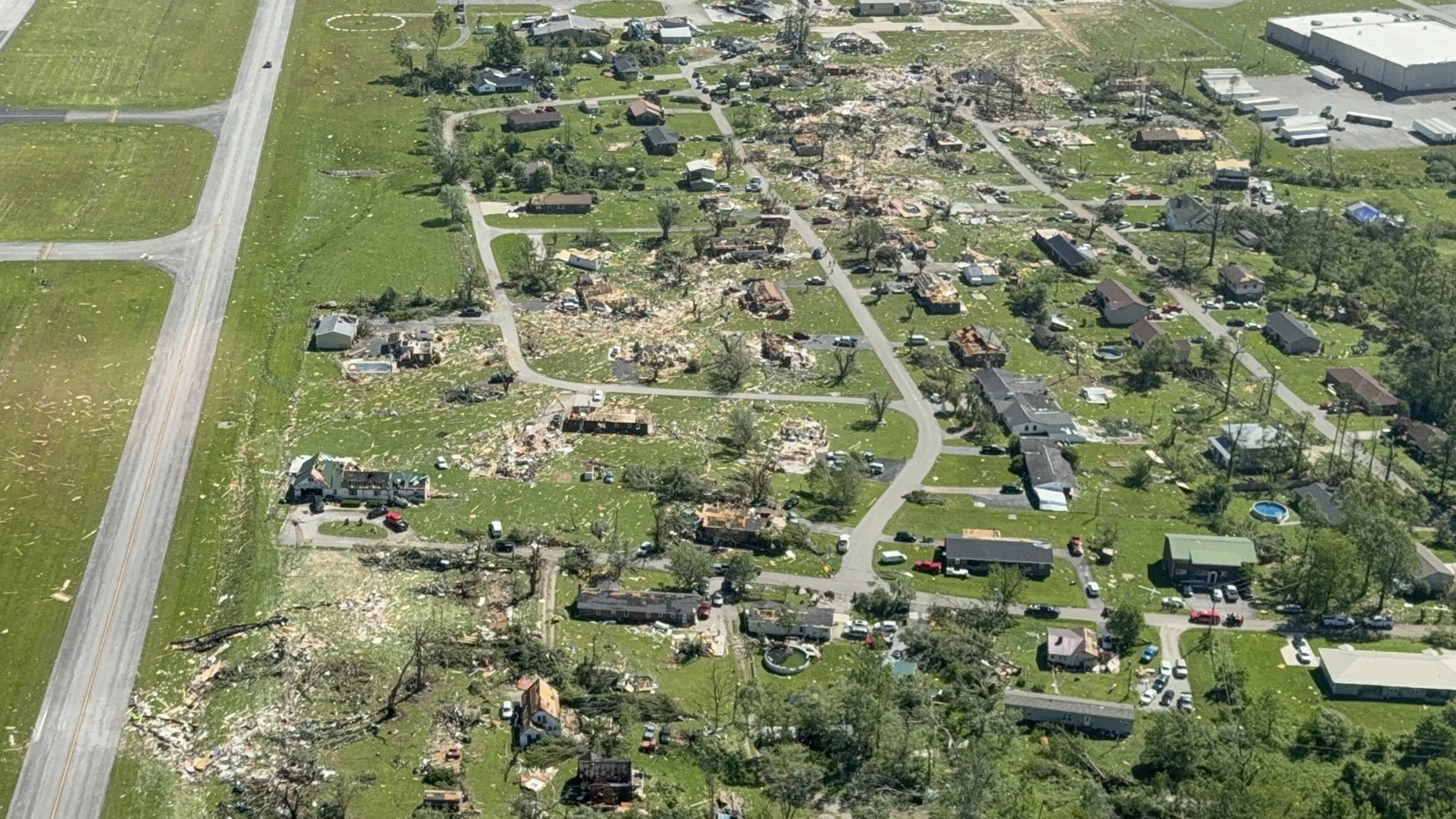

- 80 the average number of fatalities from tornadoes every year.*
- $2.5 million the average amount of damage each tornado incurs.**
- 1,500 the average number of tornadoes each year.***
Where do tornadoes occur?
- More tornadoes* occur in the U.S. than in any other country.
- “Tornado Alley,” an area encompassing the Midwest, parts of the south and plains states, has shifted** to include almost everywhere east of the Rockies.
- Tornadoes occur worldwide, though Canada and the U.K. account for the highest frequency of tornadoes outside the U.S.
The regions of the United States where tornadoes occur more frequently are shifting east. A 2021 study of the change in the number of days favorable to tornado formation found that areas around the Mississippi River and east of the Appalachian Mountains saw the most significant increases. At the same time, tornado activity in places like Oklahoma and Kansas decreased to some of the lowest numbers ever seen.
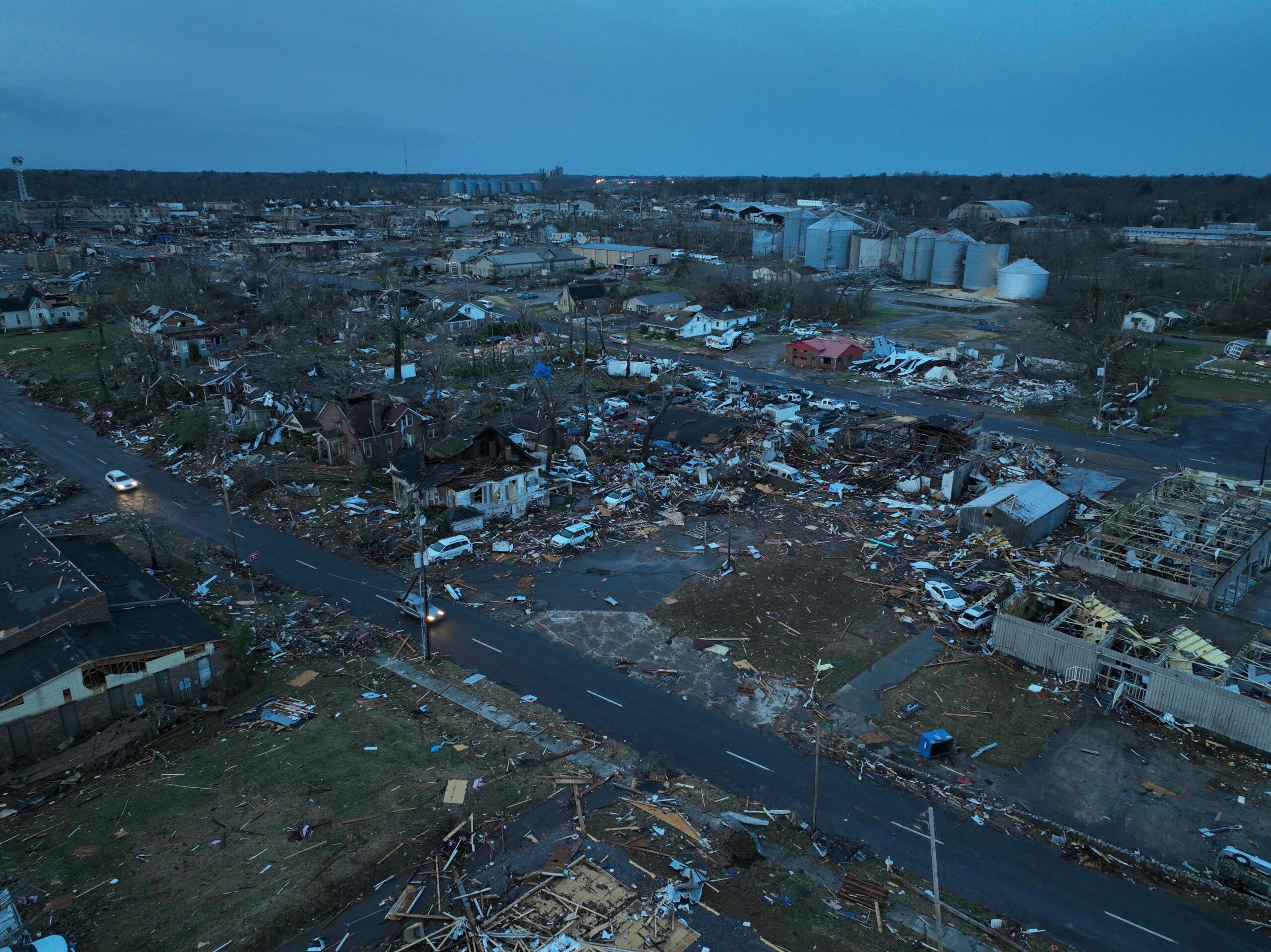
When do tornadoes occur?
- About 70%* of tornadoes occur from March to June; however, tornadoes have been happening more frequently throughout the year.
- Most tornadoes occur between 4 p.m. and 9 p.m. **
- The larger patterns associated with tornadoes are changing as scientists begin to see tornadoes appear more frequently in clusters***, and powerful tornadoes**** occurring more frequently in winter months.
These shifts are changing the dangers associated with tornadoes and how people understand their tornado-related risk.
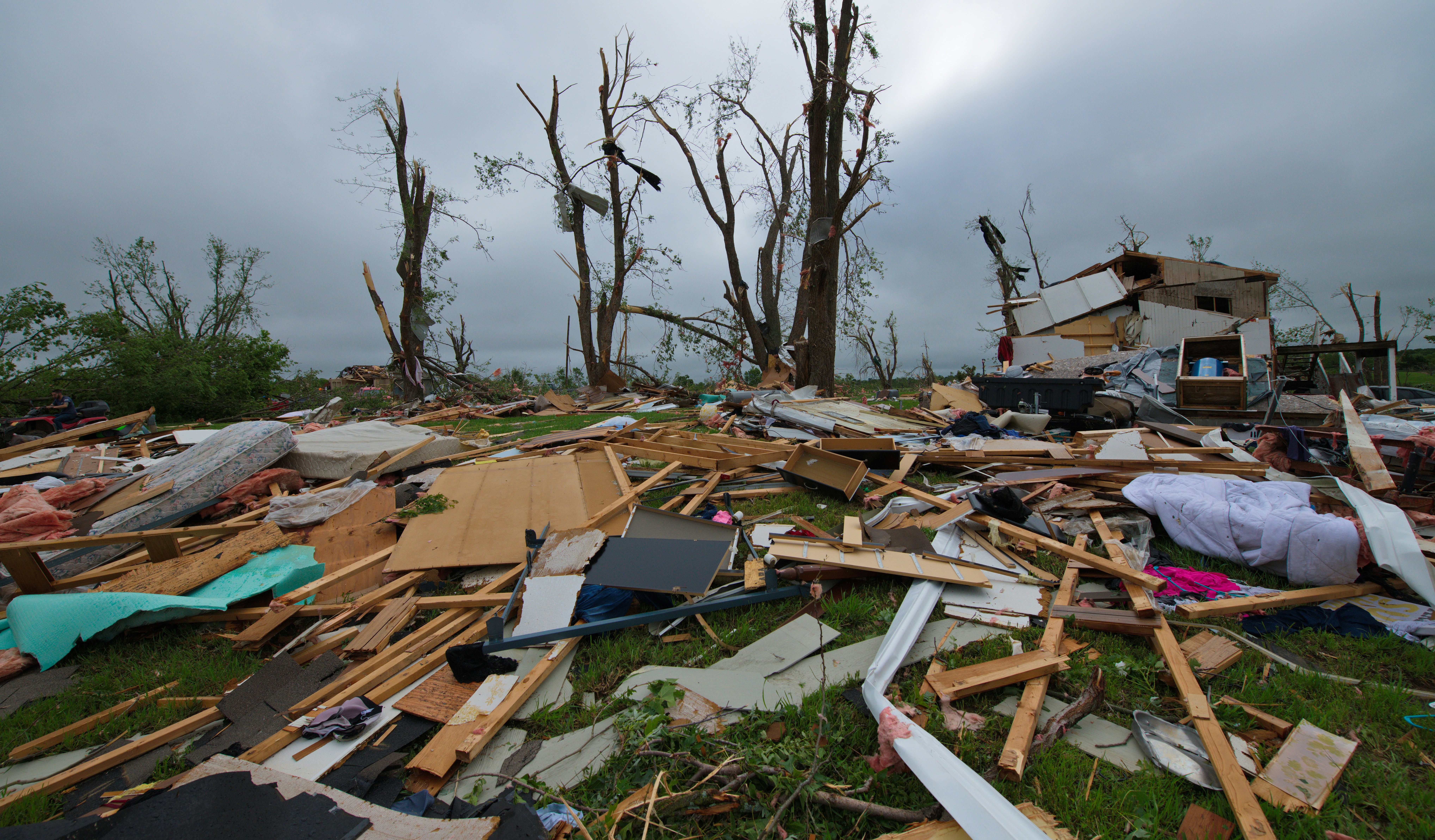
Who is affected by tornadoes and how?
- People living in mobile homes make up to 54%* of the fatalities caused by tornadoes.
- The Journal of Economic Studies** found that both “poverty and African American status are linked to greater tornado damages.”
- There is an acute need for weather information and warnings accessible to people with disabilities and functional needs.
A 2020 study about tornado warnings among people with blindness or low vision found that most of those interviewed preferred television, phone alerts and radio for receiving weather warnings. Participants also identified the need for information to be hyper-local, including the use of street names and other identifying landmarks to help distinguish where the areas of concern are.
The authors found that areas struck by tornadoes were more likely to have a higher percentage of Black residents, a lower percentage of people with a bachelor’s degree, and a lower median income.
People living in poverty and Black people are less likely to be homeowners and must rely on the decisions of rental building owners to determine whether their home will be rebuilt. Insured homeowners are also more likely to be able to afford to rent the decreased amount of rental housing available, even as rental prices increase. This leads to a higher level of displacement and fewer affordable housing options available after a tornado, often changing the makeup and nature of the community simultaneously.
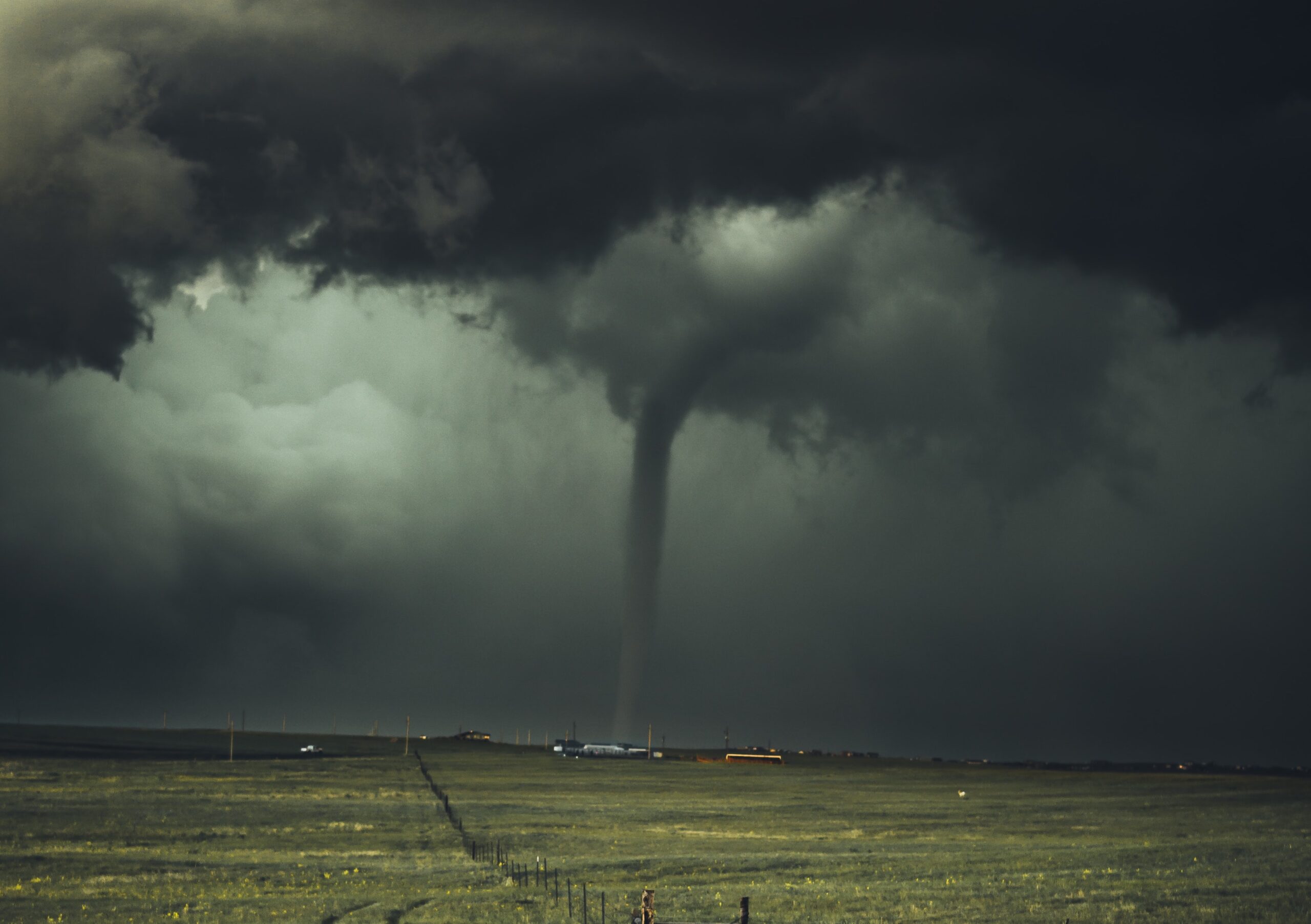
Why do tornadoes occur?
- Tornadoes form at the base of supercell* thunderstorms.
- Tornadoes need winds of different speeds, directions and temperatures to form.
- Tornadoes are occurring with more frequency and intensity as climate change shifts temperatures with less seasonal predictability.
Tornadoes form within powerful thunderstorms, particularly supercells, when rising warm, humid air interacts with cooler air aloft, creating instability and strong updrafts. Wind shear—changes in wind speed and direction at different altitudes—causes the rising air to begin spinning horizontally, and as the updraft intensifies, this horizontal rotation is tilted vertically.
For a tornado to develop, spinning air must also occur near the ground, often as downdrafts of cooler air descend and spread out, interacting with rising warm gusts to generate rotation at the surface. This spinning air accelerates as it is drawn inward, like a figure skater pulling in their arms, due to the conservation of angular momentum. A tornado forms when this concentrated, rotating column of air extends from the thunderstorm cloud base to the ground.
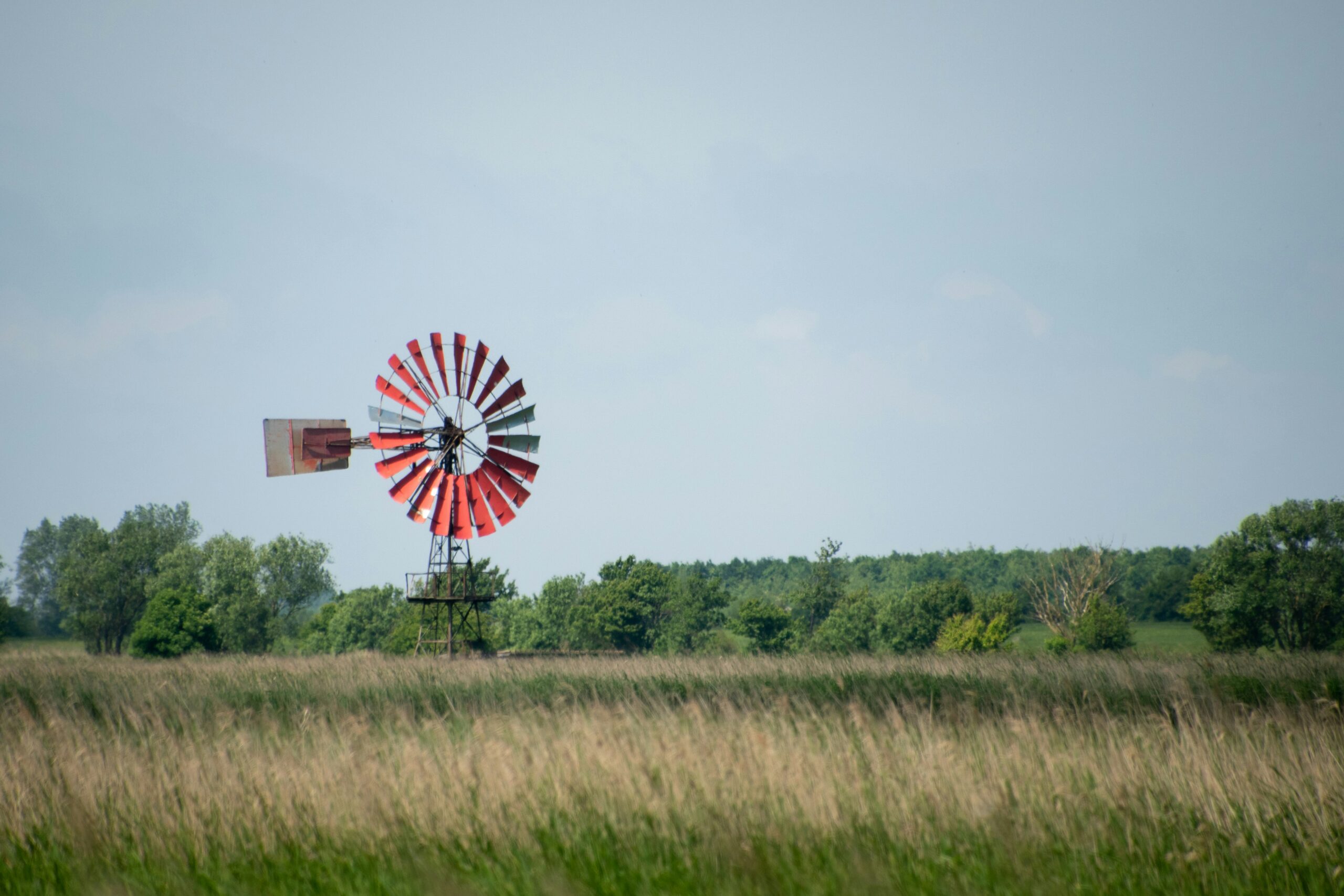
How can funders help?
- Support improving the accuracy* of prediction and warning systems.
- Advocate for better-built structures and codes to withstand high winds.
- Improve the accessibility of tools that allow people to manage their own risk.
Improved weather tracking and emergency alerting systems are needed to give people enough information and time to seek shelter. Additionally, emergency alerts often cover multiple counties and dozens of communities – largely because the meteorologists issuing them from the NWS are not at the storm’s epicenter. Supporting local media organizations can help communities receive more localized information about where a tornado is, which will help people make better decisions about their safety.
Most weather apps that provide radar images and online streaming of emergency radio communication are not fully accessible to people with disabilities and functional needs. Increasing accessibility to this technology will help people with disabilities and functional needs keep themselves safe during tornadoes.
Lastly, in areas that are historically most vulnerable to tornadoes, there are no laws requiring structures like apartment buildings or manufactured homes to be built to withstand high winds, like there are in hurricane-prone areas.
Learn more
Additional resources
- CDP blog: From theory to practice: Disaster philanthropy and tornadoes
- Ready.gov: Steps to Prepare for a Tornado
- NOAA: Storm Prediction Center’s Tornado Overview
- University Corporation for Atmospheric Research: How Tornadoes Form
- AccuWeather: Debunking Common Myths About Tornadoes
- National Weather Service: Tornado Safety
- NOAA: Map killer tornadoes by year
Sources
What are tornadoes?
Call-out Box
Who is affected by tornadoes and how?
When do tornadoes occur?
Where do tornadoes occur?
Why do tornadoes occur?
How can funders help?
We welcome the republication of our content. Please credit the Center for Disaster Philanthropy.